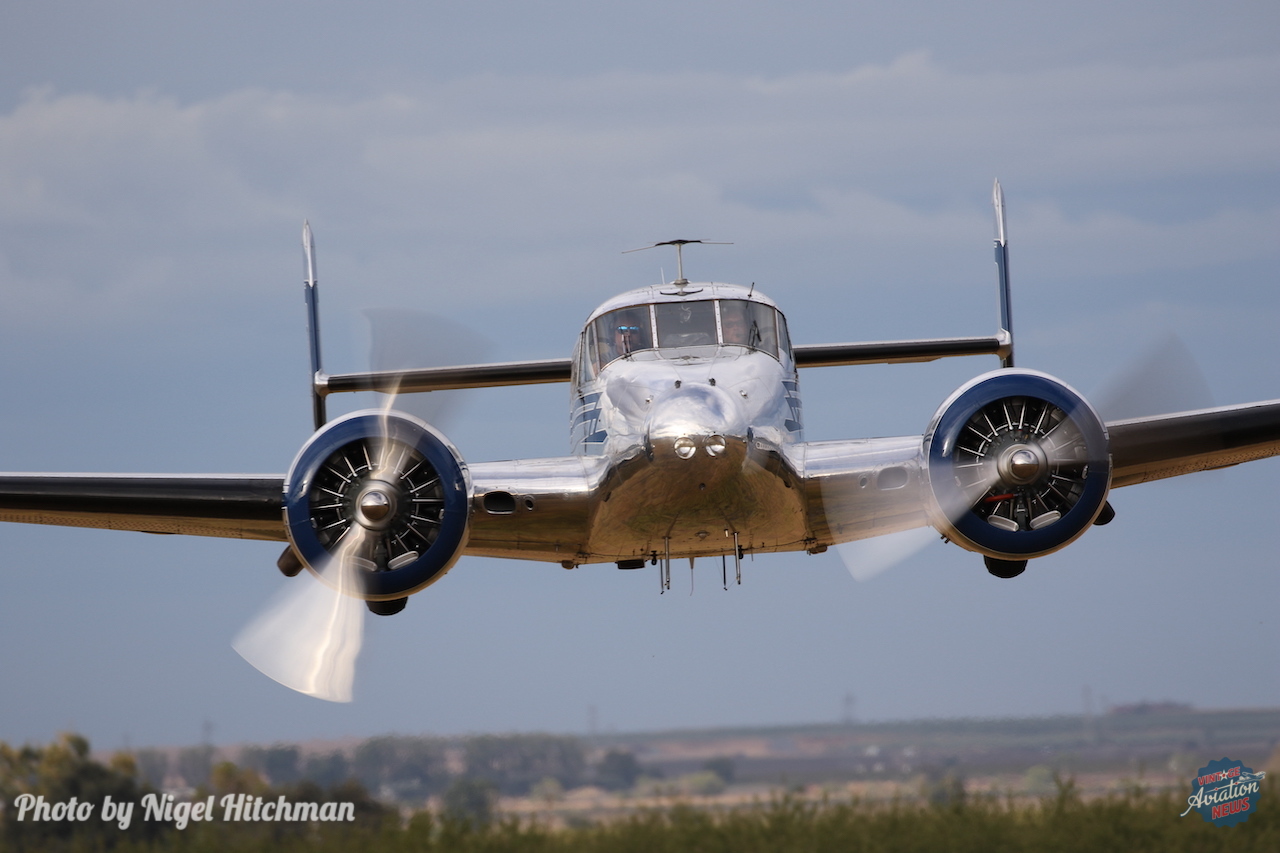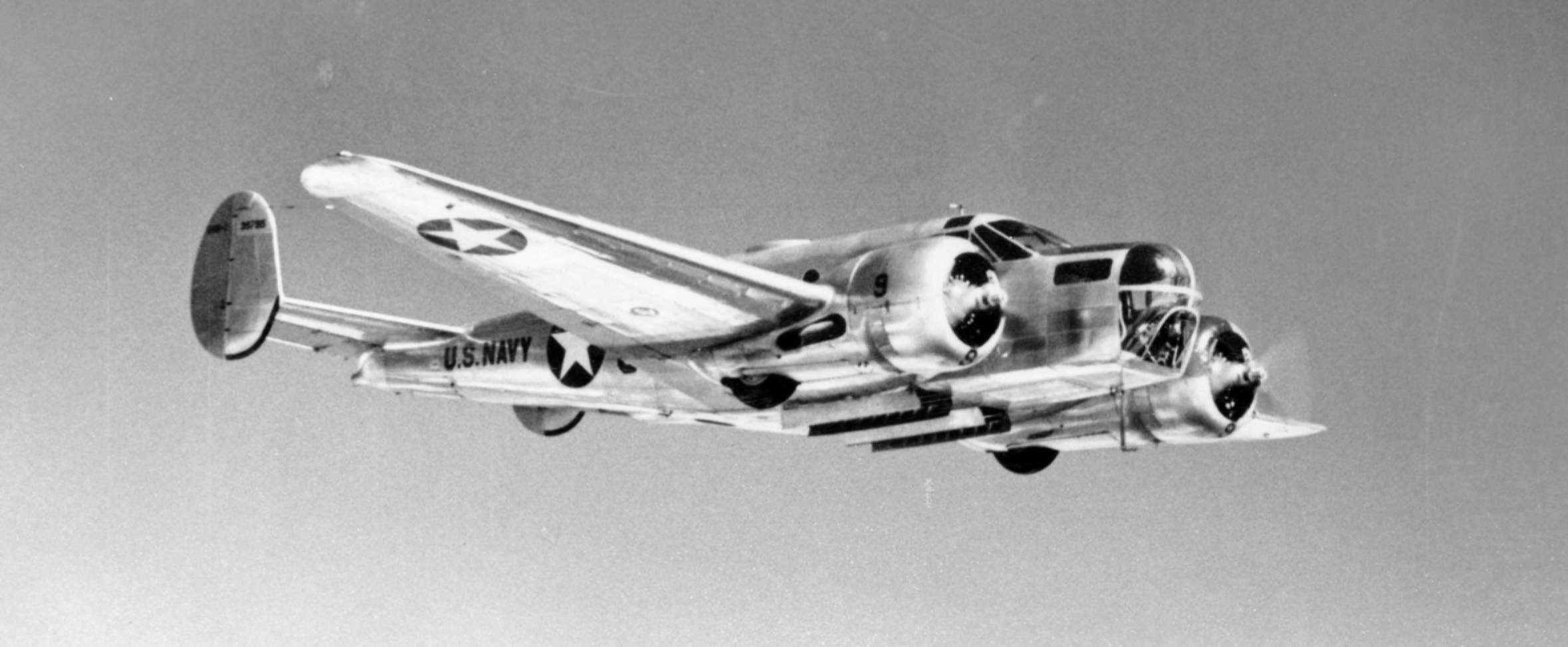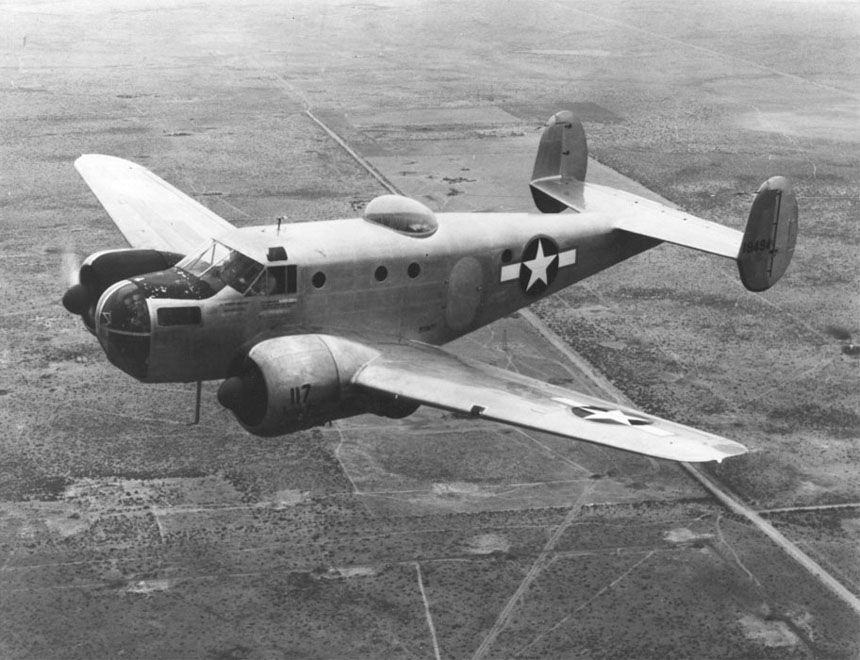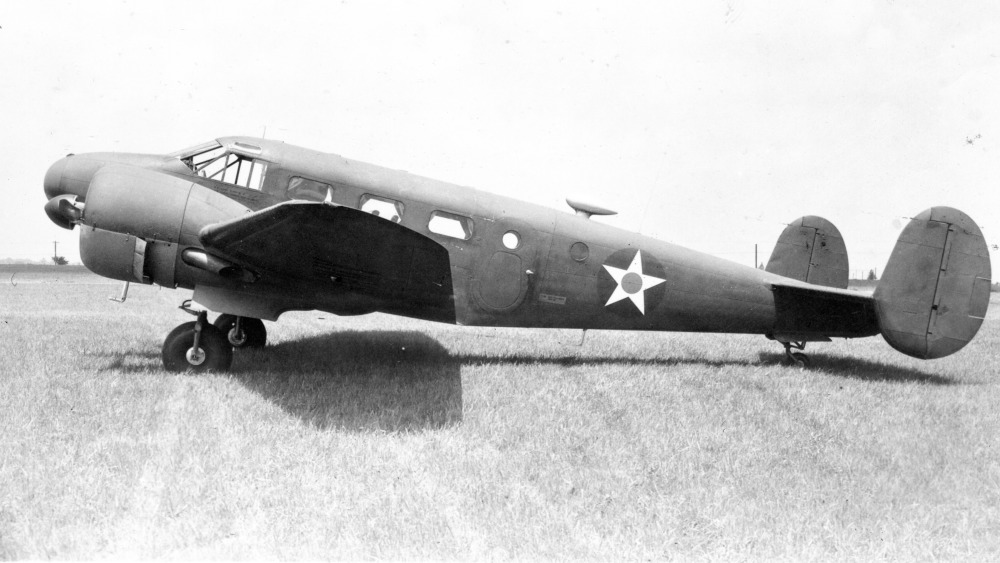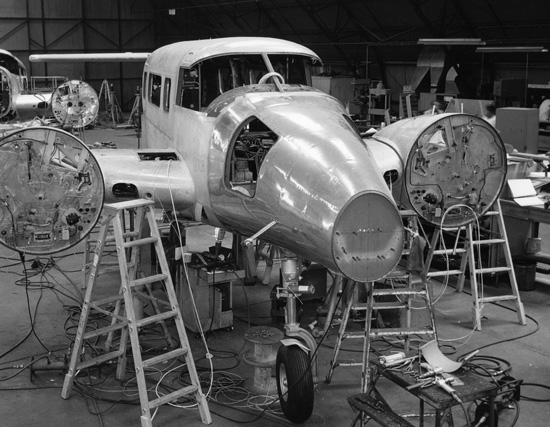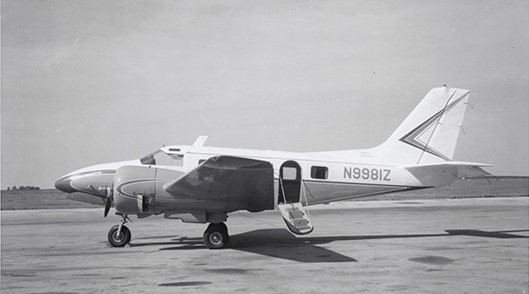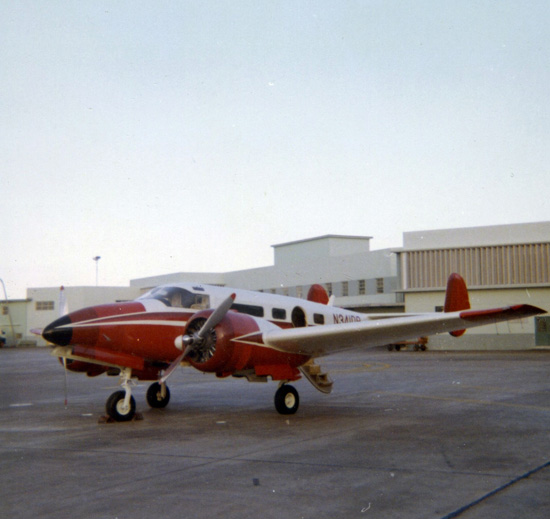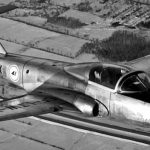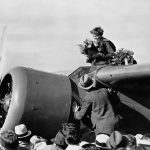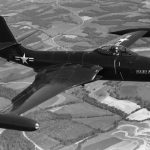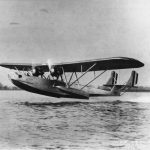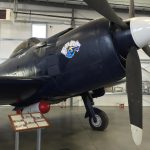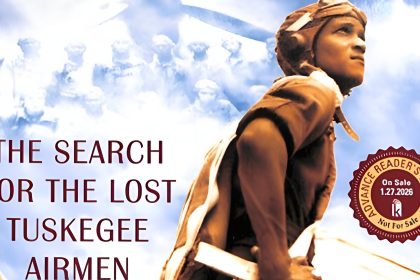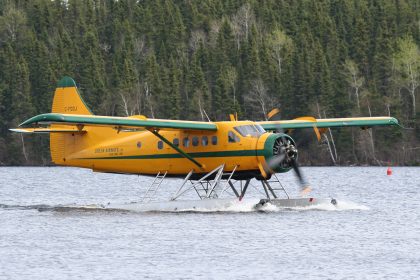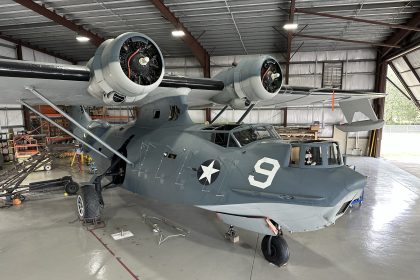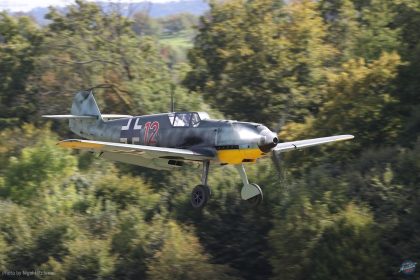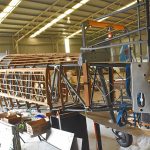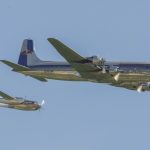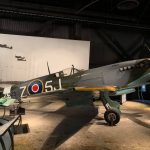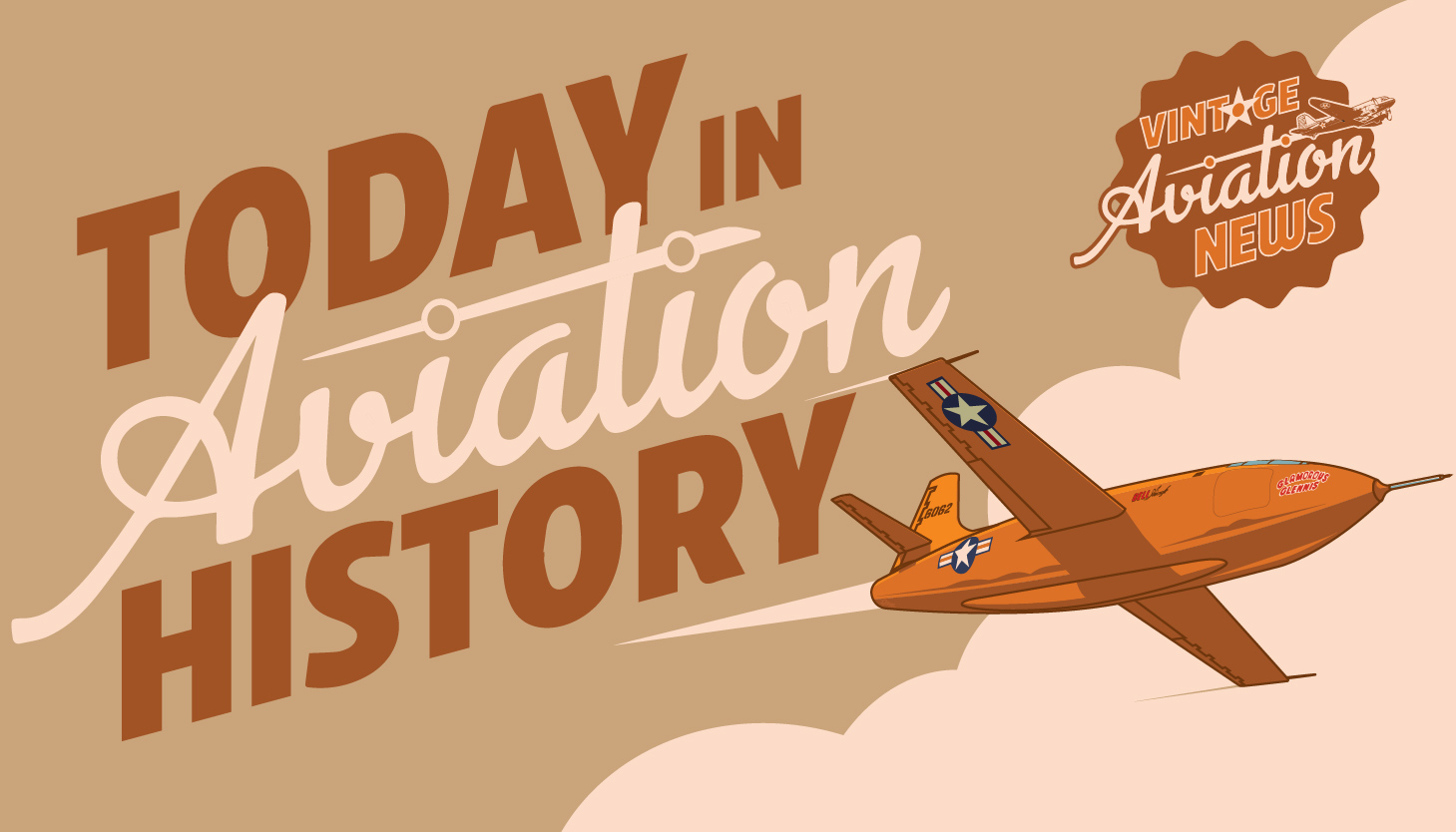
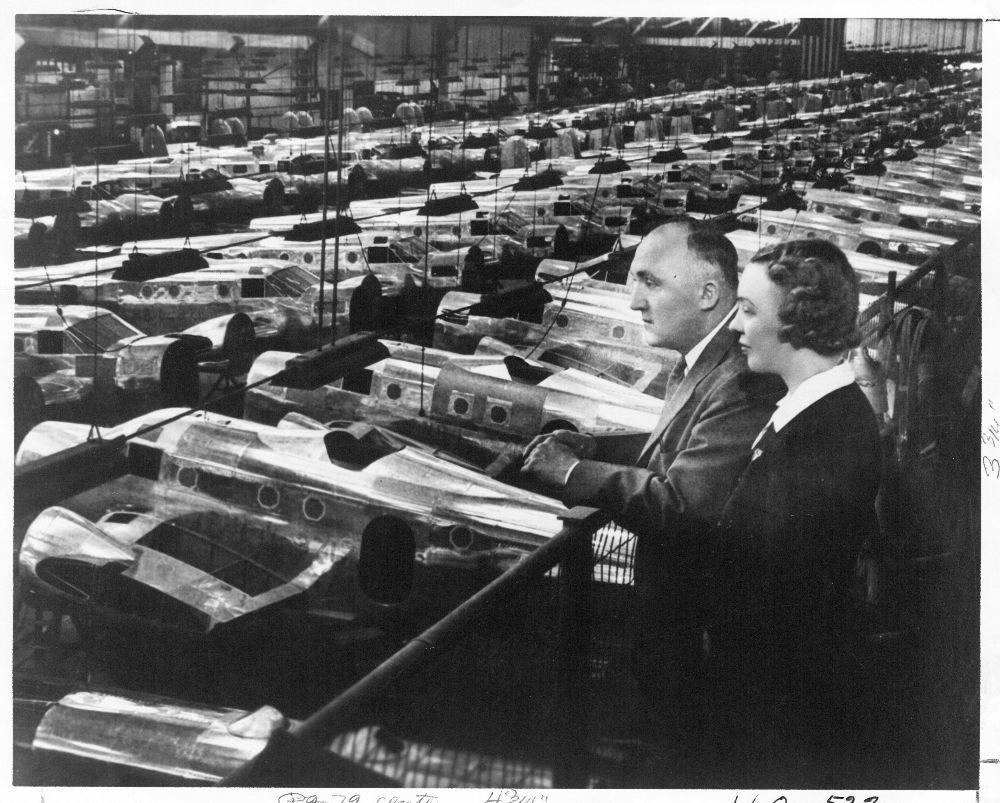
In 1932, aviator Walter Beech, his wife Olive Ann Beech, and engineer Ted A. Wells helped establish the Beech Aircraft Company in Wichita, Kansas, following Beech’s work alongside Clyde Cessna and Lloyd Stearman in the former Travel Air Manufacturing Company. Beech Aircraft gained notoriety through the elegant lines of the Model 17 Staggerwing, a fast executive transport during the Great Depression. Glamorous though the Staggerwing was, Beech realized that a design that could carry more passengers and cargo than the single engine Staggerwing would be needed. This led to the design of a twin engine, all-metal transport with fabric-covered control surfaces and a twin tail configuration. This would become the Beechcraft Model 18 and was intended to serve as an executive transport or feeder airline aircraft, with a capacity to carry between six to eight passengers, and controls for two pilots sitting in a tandem configuration, similar in appearance to designs by Lockheed Aircraft, such as the Model 10 Electra and the Model 12 Electra Junior, the latter of which has often been confused with the Beech 18 for its similar profile.
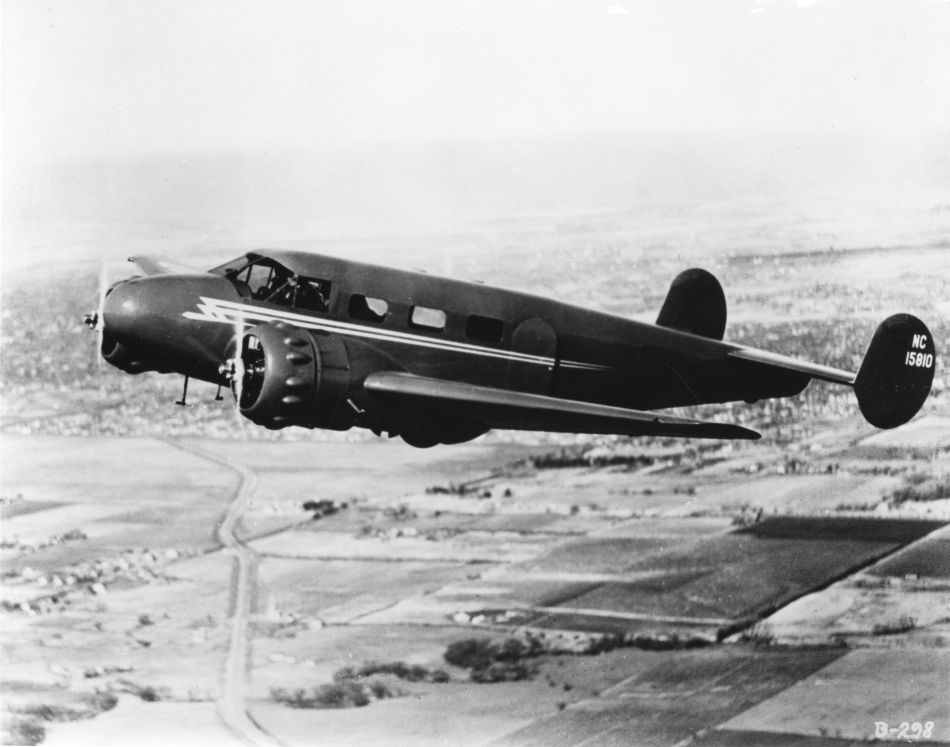
On January 15, 1937, the first Beech 18, construction number 62, civil registration NX15810, made the type’s first flight at the Beech Factory Airport in Wichita, KS on January 15, 1937, with Beech test pilot Ding Rankin and TWA senior pilot James N. Peyton at the controls. This aircraft was powered by two Wright R-760 seven-cylinder radial engines, each producing 350 hp. Other pre-WWII Beech 18s were also powered by Jacobs R-915 radial engines, but the most common type of engine used on Beech 18s would be the 450 hp Pratt & Whitney R-985 Wasp Junior radial engine.
On March 4, 1937, the Beechcraft Model 18 received its type certificate by the US Civil Aeronautics Authority, the precursor to the Federal Aviation Administration (FAA). For the remainder of the 1930s, production of the Beech 18 steadily continued, with Beechcraft receiving an order from Nationalist China, then in the middle of the Second Sino-Japanese War, for six light bombers based on the Beechcraft Model 18 that were called M18Rs for the Republic of China Air Force (ROCAF) while others went to business owners or small charter companies in both the United States and Canada, but by the time of the Attack on Pearl Harbor, only 39 Model 18s had been sold, 29 of these to civilian companies.
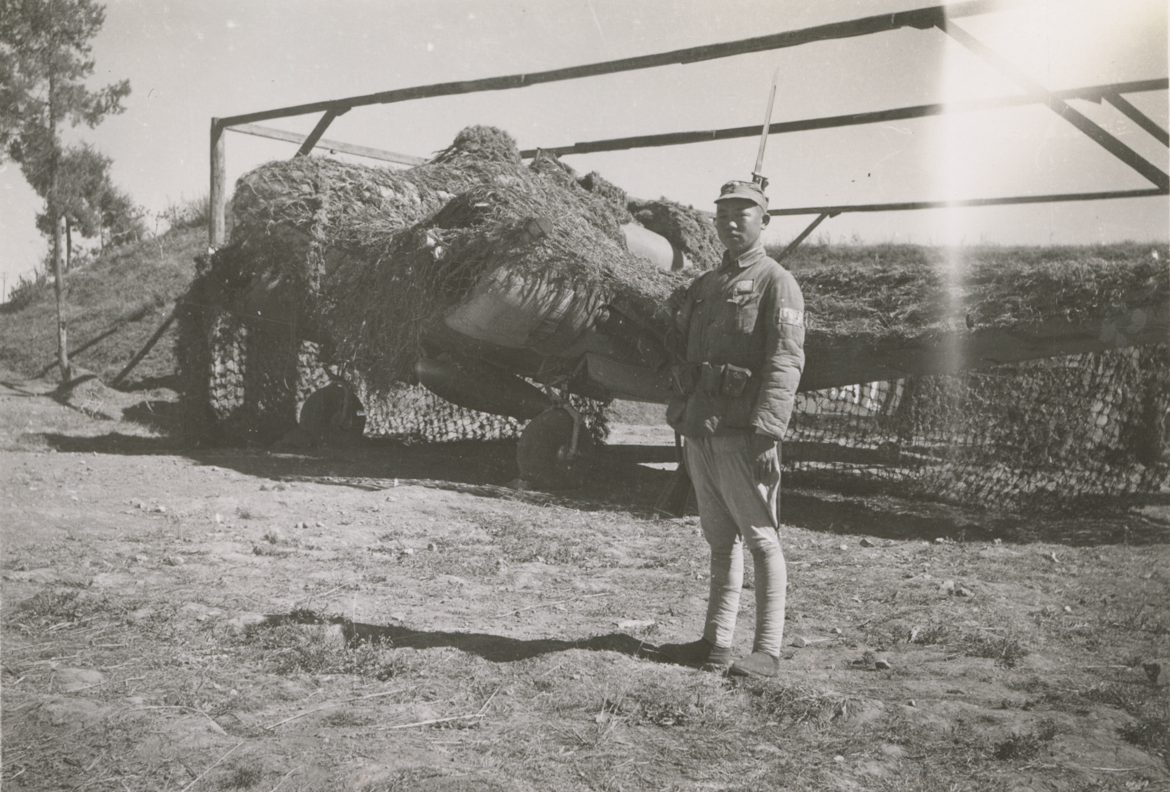
Aircraft production in America went into overdrive during WWII, and in addition to producing more examples of the Model 17 Staggerwing as VIP military transports, Beech Aircraft would build thousands of Beechcraft Model 18s for the US armed forces. In addition to being used as staff transports for military as the C-45 Expeditor in the Army Air Force and the JRB (J=Utility, R=transport, B=Beech) in the Navy, Beech 18s were manufactured as training aircraft, namely the AT-7 Navigator for aerial navigation training, the AT-11 Kansan for bombardier/gunnery training, and the F-2 for photo reconnaissance training for the US Army Air Force, while the US Navy flew the SNB-1 for bombardier/gunnery training, the SNB-2 for navigation training, and the SNB-2P for photo reconnaissance training, and some were even used as drone controllers or electronic countermeasure training aircraft. The Beech 18 also saw military service with the British Commonwealth, primarily with the Royal Air Force (RAF) and the Royal Canadian Air Force (RCAF) as the Expeditor. The Twin Beech proved to be a reliable, easy to operate, and easy to maintain aircraft, and thousands of bomber crews, ranging from pilots, navigators, bombardiers, and gunners received their first experiences with multi-engine aircraft on the various Beech 18 models before learning to operate the aircraft they would fly overseas in combat.
After the war, thousands of Beech Model 18s were sold as surplus to be bought by all manners of companies and individuals, from business transports to skydiving, banner towing, aerial firefighting, small-haul freight, aerial ambulance, cloud seeding, aerial spraying, and use in numerous movies and television shows. The aircraft could also be operated using retractable landing gear, floats, and skis, seeing widespread use in some of the more remote regions of the world, from the Arctic tundra of Alaska and the Northwest Territories to the Australian Outback and the jungles of Brazil. Some aircraft, though, were also used by smugglers to bring illicit materials into the United States, where the Beech’s handling characteristics, ability to operate from rugged conditions, and ease of maintenance were put to us in a manner that its designers never intended for it to do.
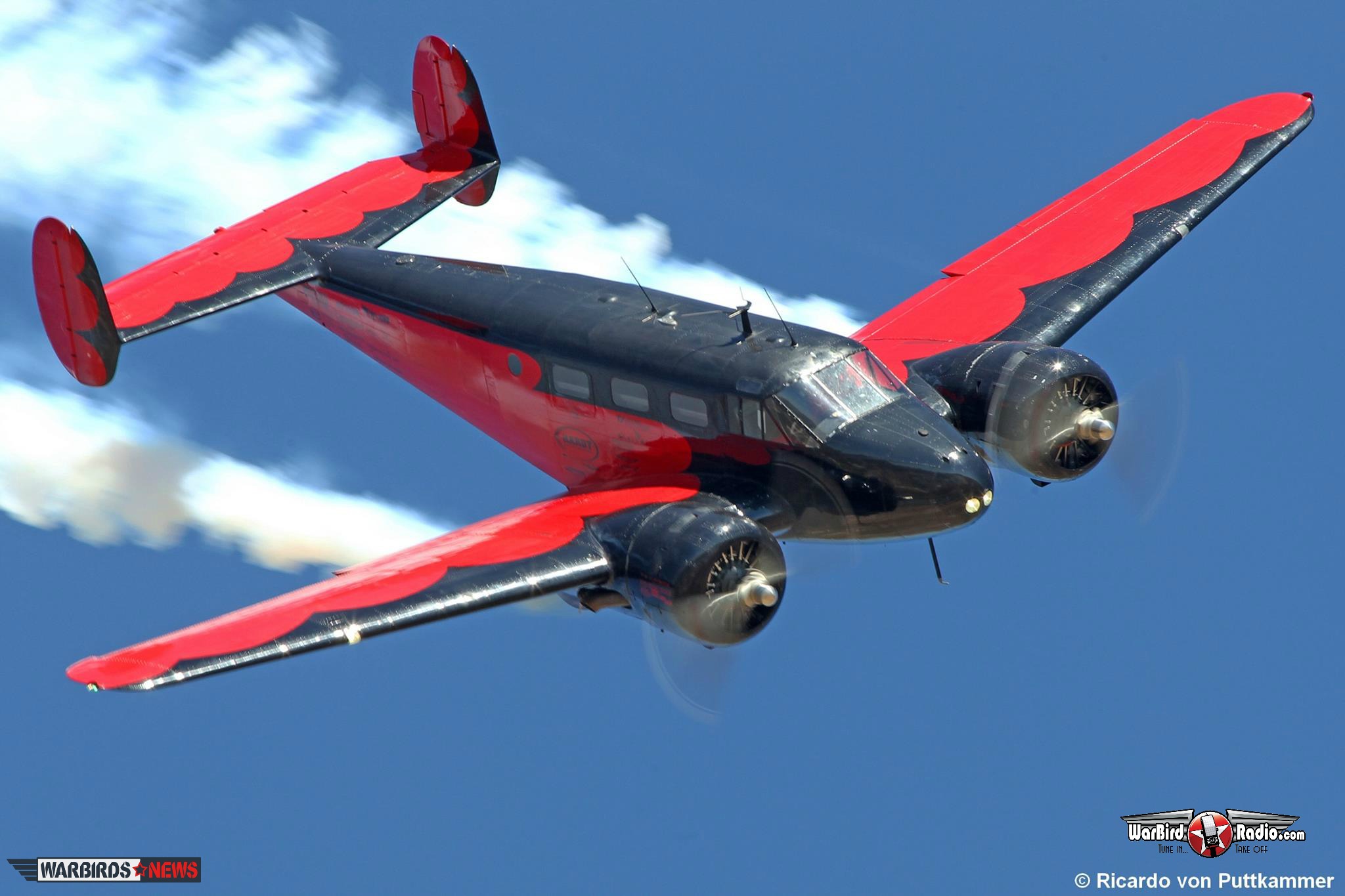
Production of further Beech 18s continued after WWII, with the first post-war civil version being the Model D18S, with seating for eight passengers and a maximum takeoff weight (MTOW) of 8,750 lb (3,970 kg). During the 1950s, many Expeditors serving in the US armed forces were remanufactured to the post-war civil standards, and were given new fuselages, wing center sections, and undercarriages, along with new designations (C-45G/C-45Hs in the USAF, SNB-5s in the USN), constructor’s numbers and military serial numbers. Some of these remained in service when the during the adoption of the 1962 United States Tri-Service aircraft designation system, which saw all Beech 18s still in military service, be they Air Force, Army, Navy, Marines, or Coast Guard becoming C-45s (Navy trainers became TC-45J and Navy recon trainers RC-45J respectively, later becoming UC-45Js as they shifted from aircrew training to utility transport work). The USAF retired its last C-45H in 1963, the USN retired its last UC-45J in 1972, while the U.S. Army flew its C-45s until 1976.
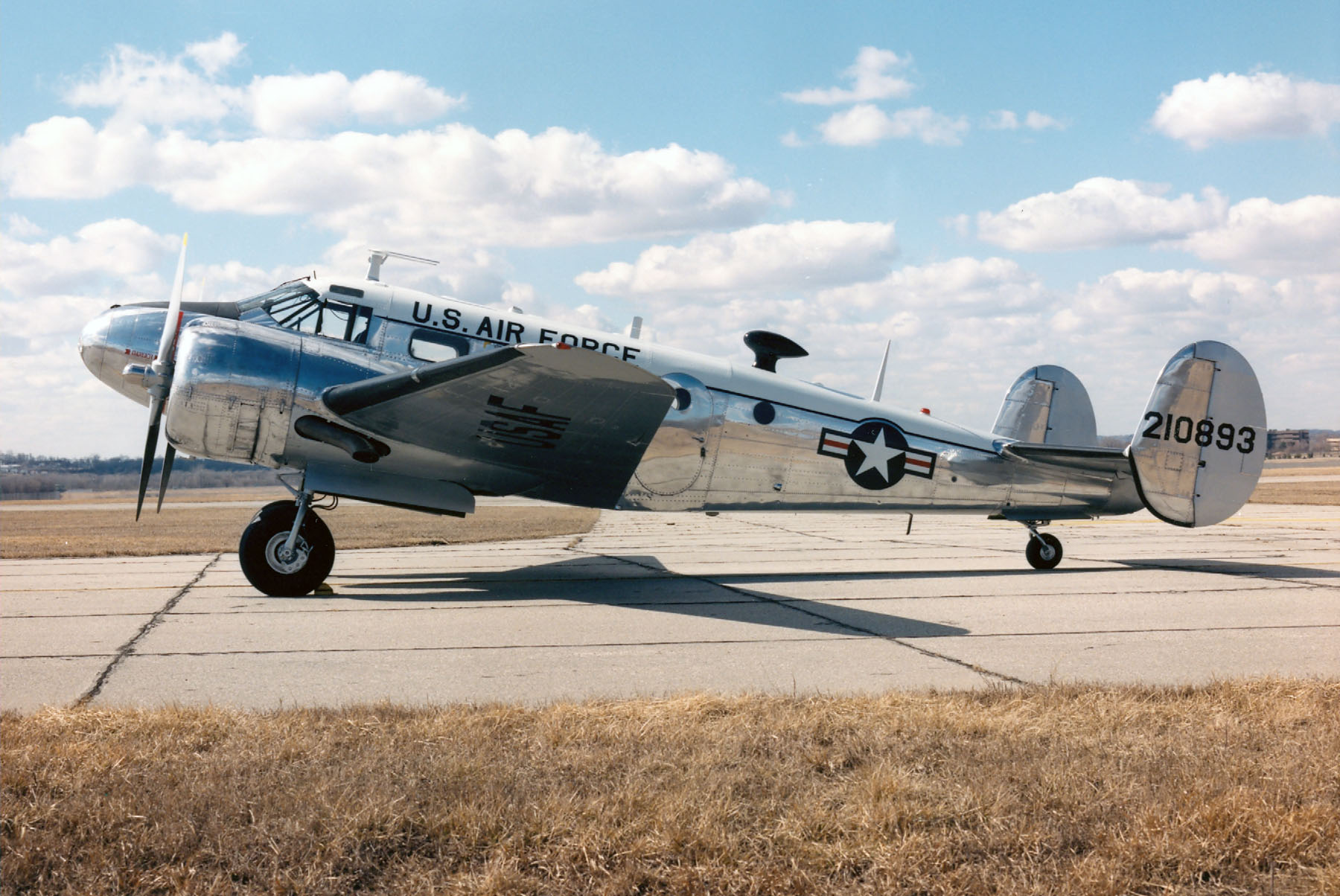
In all, the Beech 18 was flown in military service with the following countries: Argentina, Bolivia, Brazil, Canada, Chile, Colombia, Costa Rica, Côte d’Ivoire [Ivory Coast], Cuba, Dominican Republic, Ecuador, El Salvador, France, Guatemala, Haiti, Honduras, Indonesia, Iran, Italy, Japan, Mexico, Netherlands, Nicaragua, Niger, Nigeria, Paraguay, Peru, Philippines, Portugal, Somalia, South Africa, South Vietnam, Spain, Sri Lanka, Sweden, Switzerland, Taiwan, Thailand, Tonga, Turkey, United Kingdom, United States, Uruguay, Venezuela, and Zaire.
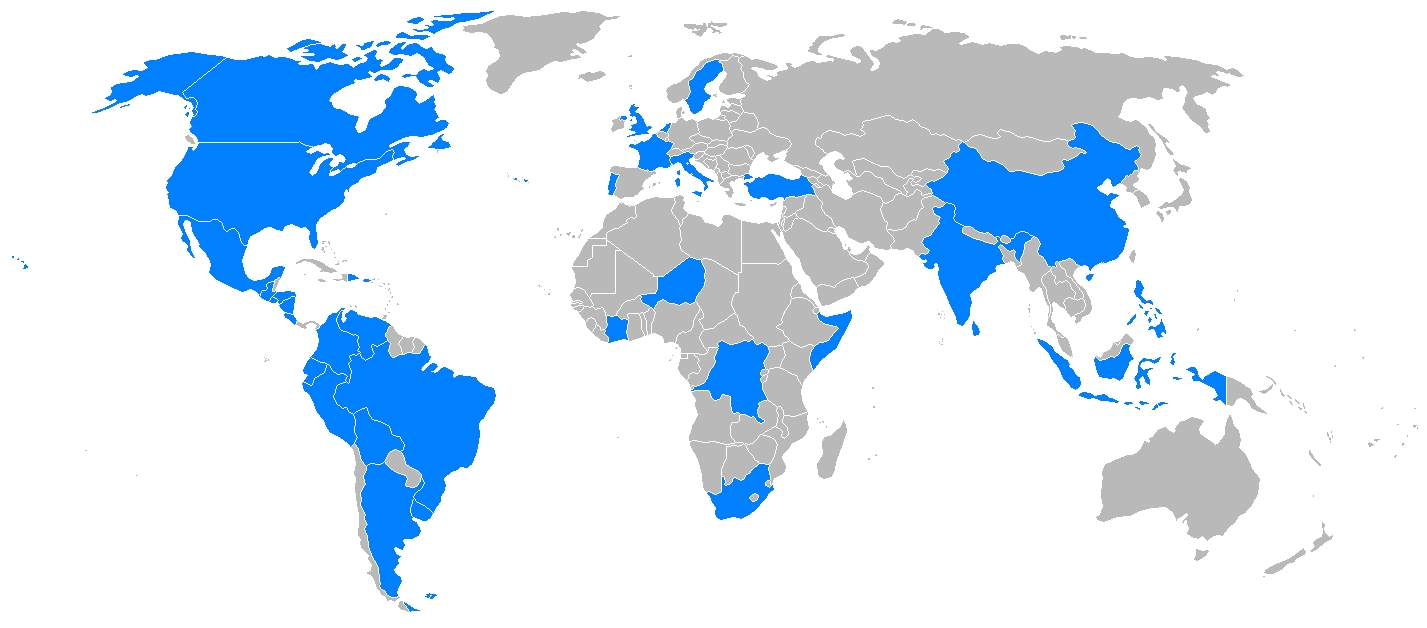
In Wichita, the Beechcraft factories kept building new Beech 18s, with some later models being built with optional tricycle landing gear configurations. In late 1969, the last newly manufactured Beech 18 rolled off the factory and went to Japan as JA5174 (construction number BA-765). In addition to the aircraft built by Beech in Wichita, there were also numerous conversion kits, giving aircraft stretched fuselages to accommodate more passengers, enlarged cabin windows and single-piece windscreens for the cockpit, single tail fins, turboprop engines, and a tricycle landing gear configuration as opposed to the tailwheel configuration of the original Twin Beeches, rendering many Beech 18s almost unrecognizable from their stock counterparts.
Today, hundreds of Beech 18s are still in existence today, from static displays in museums to meticulously restored airworthy examples flown by private owners. Incredibly, the first Beech 18 to be built and flown, NX15810, survives today. After going through the hands of several owners, it is now under restoration at Chino Airport in Chino, California, where it is to be rendered airworthy in its original 1937 configuration. It is a testimony to the lasting legacy of the Twin Beech, that it continues to fly on, nearly 90 years after the type made its first flight in the wintry skies over the prairies of Wichita back in 1937.
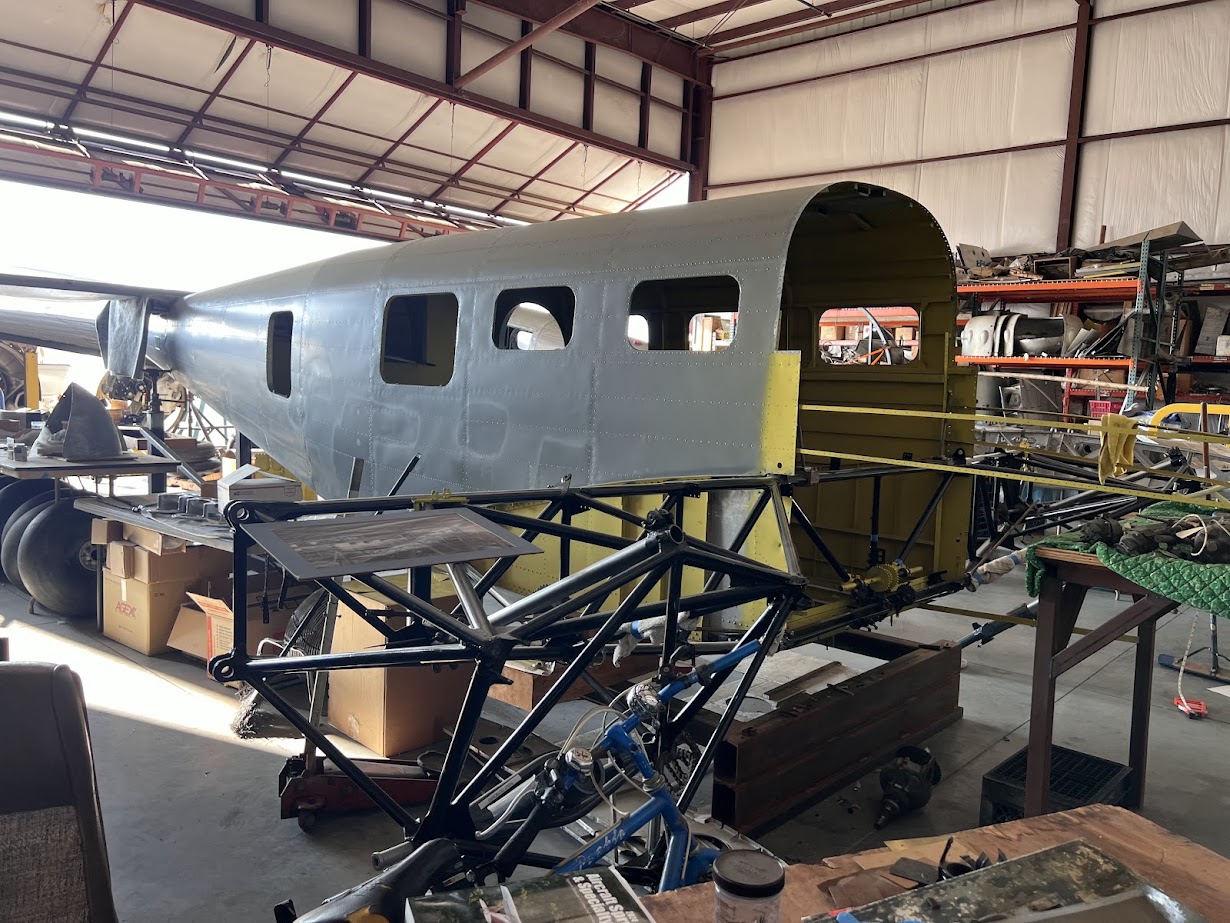
Today in Aviation History is a series highlighting the achievements, innovations, and milestones that have shaped the skies. All the previous anniversaries are available HERE







